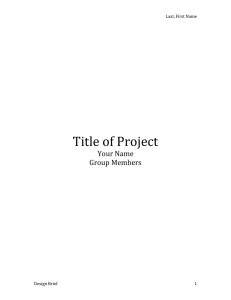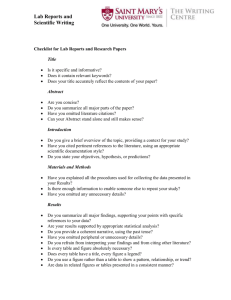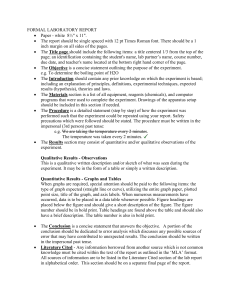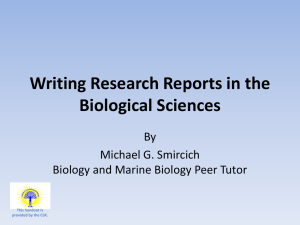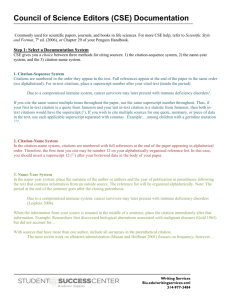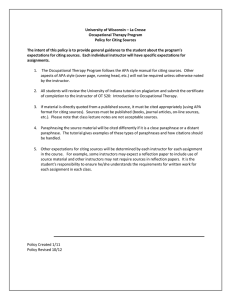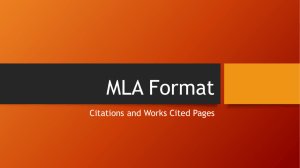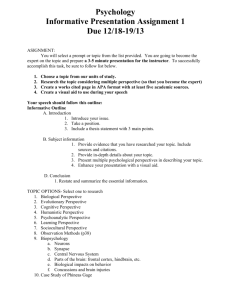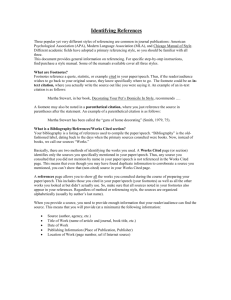D8 - Science Paper Guidelines and Format
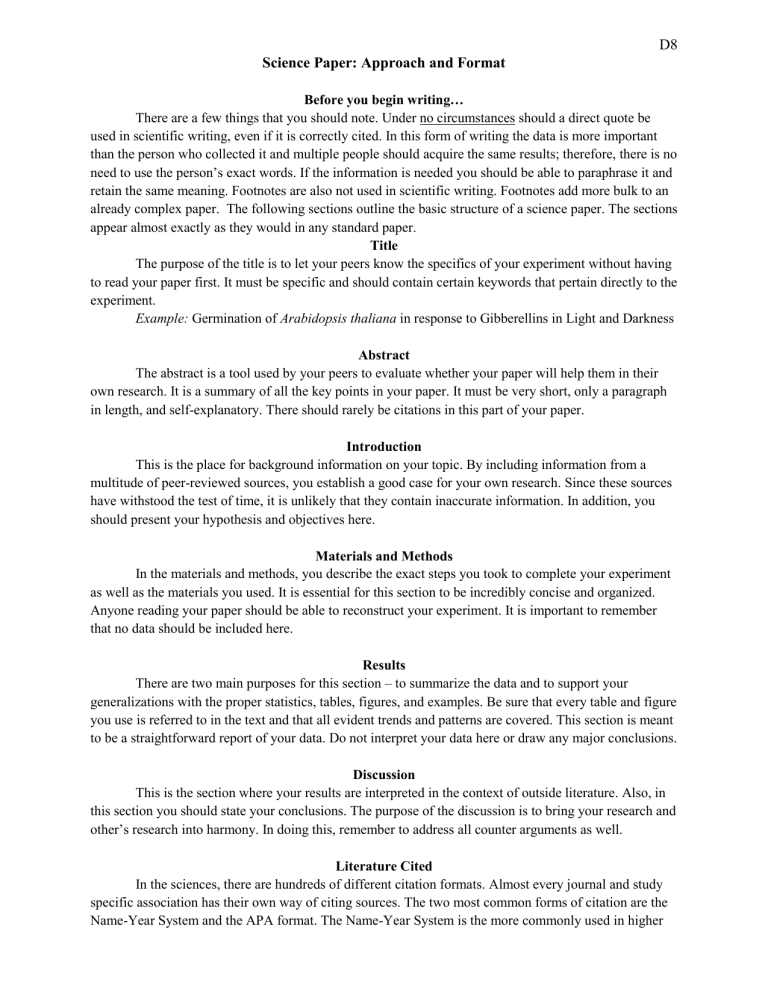
Science Paper: Approach and Format
D8
Before you begin writing…
There are a few things that you should note. Under no circumstances should a direct quote be used in scientific writing, even if it is correctly cited. In this form of writing the data is more important than the person who collected it and multiple people should acquire the same results; therefore, there is no need to use the person’s exact words. If the information is needed you should be able to paraphrase it and retain the same meaning. Footnotes are also not used in scientific writing. Footnotes add more bulk to an already complex paper. The following sections outline the basic structure of a science paper. The sections appear almost exactly as they would in any standard paper.
Title
The purpose of the title is to let your peers know the specifics of your experiment without having to read your paper first. It must be specific and should contain certain keywords that pertain directly to the experiment.
Example: Germination of Arabidopsis thaliana in response to Gibberellins in Light and Darkness
Abstract
The abstract is a tool used by your peers to evaluate whether your paper will help them in their own research. It is a summary of all the key points in your paper. It must be very short, only a paragraph in length, and self-explanatory. There should rarely be citations in this part of your paper.
Introduction
This is the place for background information on your topic. By including information from a multitude of peer-reviewed sources, you establish a good case for your own research. Since these sources have withstood the test of time, it is unlikely that they contain inaccurate information. In addition, you should present your hypothesis and objectives here.
Materials and Methods
In the materials and methods, you describe the exact steps you took to complete your experiment as well as the materials you used. It is essential for this section to be incredibly concise and organized.
Anyone reading your paper should be able to reconstruct your experiment. It is important to remember that no data should be included here.
Results
There are two main purposes for this section – to summarize the data and to support your generalizations with the proper statistics, tables, figures, and examples. Be sure that every table and figure you use is referred to in the text and that all evident trends and patterns are covered. This section is meant to be a straightforward report of your data. Do not interpret your data here or draw any major conclusions.
Discussion
This is the section where your results are interpreted in the context of outside literature. Also, in this section you should state your conclusions. The purpose of the discussion is to bring your research and other’s research into harmony. In doing this, remember to address all counter arguments as well.
Literature Cited
In the sciences, there are hundreds of different citation formats. Almost every journal and study specific association has their own way of citing sources. The two most common forms of citation are the
Name-Year System and the APA format. The Name-Year System is the more commonly used in higher
research settings, while APA is used more commonly among students. Your teacher will almost always tell you the format they would like you to use.
Writing a Successful Science Paper: A Checklist
Title
□ Is it specific and informative?
□ Does it contain relevant keywords?
□ Does it accurately reflect the content of the paper?
Abstract
□ Is it concise?
□ Does it summarize all the major parts of paper?
□ Did you refrain from using sources in this section?
□ Can it stand-alone and still make sense?
□ Is there a brief overview of the topic?
Introduction
□ Have you cited pertinent references to outside literature using proper style?
□ Do you accurately state you hypothesis and objectives?
Materials and Methods
□ Is it accurate in describing the steps necessary to complete your study?
□ Is there enough information to enable someone to repeat your study?
□ Are there any unnecessary details?
Results
□ Are all your major findings summarized and supported with specific references to the data?
□ Are your results supported by appropriate statistical analysis?
□ Is there a coherent narrative in the past tense?
□ Have you omitted unnecessary details?
□ Doe you refrain from interpreting your findings and from citing other literature?
□ Is every table and figure absolutely necessary?
□ Does every table have a title and every figure a legend?
□ Do you use a figure instead of a table to show every relationship, pattern, or trend?
□ Is all data presented in a consistent manner?
□ Do you refer to every figure and table in your text?
□ Are tables and figures understandable apart from the text?
Discussion
□ Do you address the major implications of your findings?
□ Have you considered problems, inconsistent results, and counterevidence?
□ Have you interpreted your results in the context of other literature?
□ Do you use the past tense to refer to your own findings and the present tense to refer to established literature?
Literature Cited
□ Are all the sources you used in your paper present?
□ Have you followed a conventional format consistently and meticulously?
□ Is all the information about every source accurate and complete?
Adapted from: McMillan, Victoria E. Writing Papers in the Biological Sciences . 4 th ed. Boston: St. Martin’s, 2006. Print.
Center for Transformative Learning
Peer Consultation
Stephenson Hall CPO 2136 x3404
